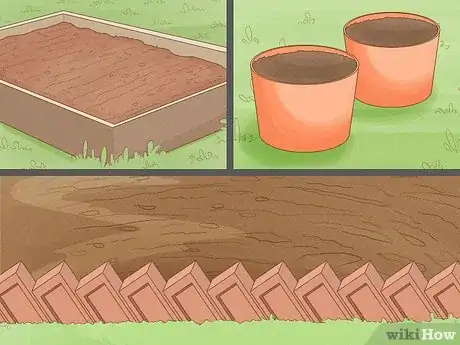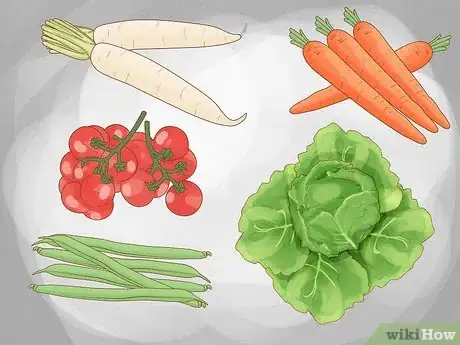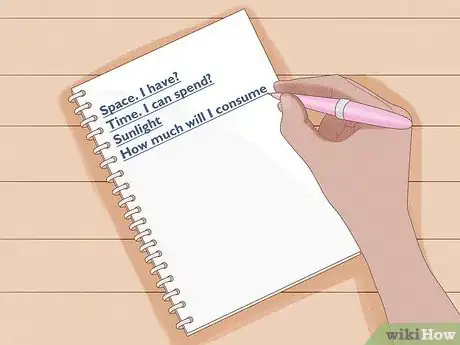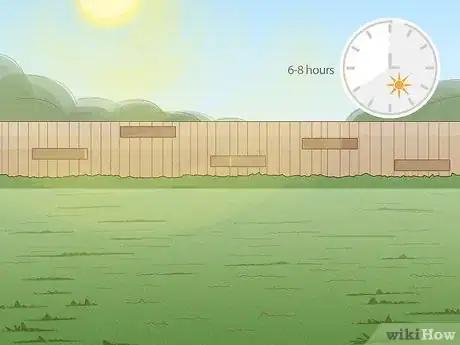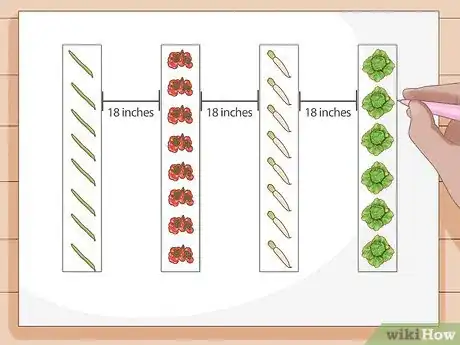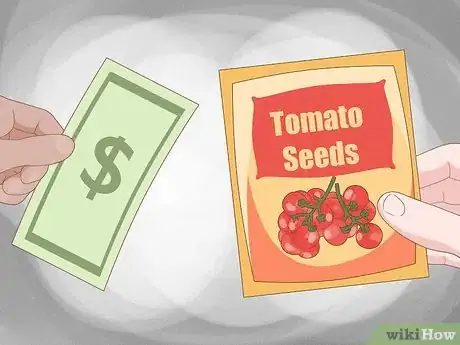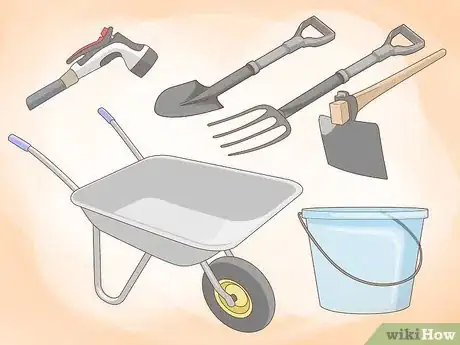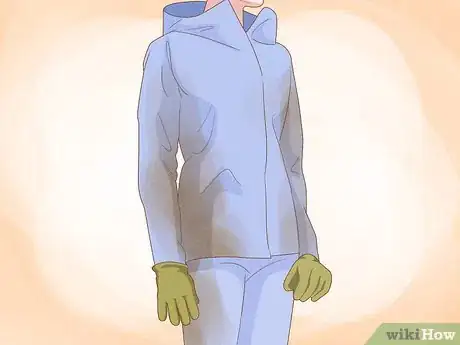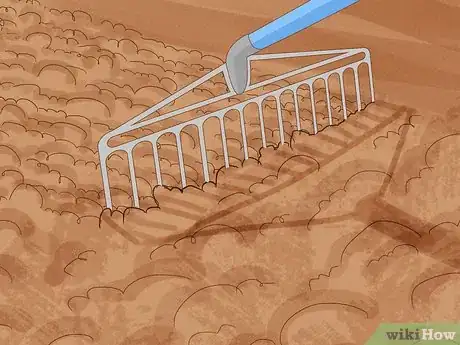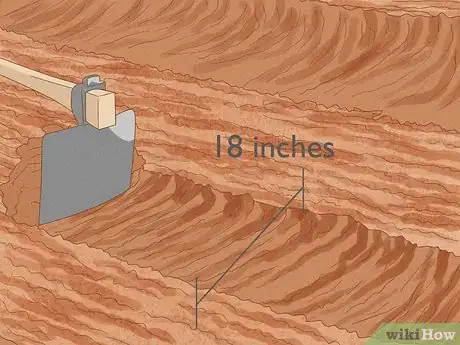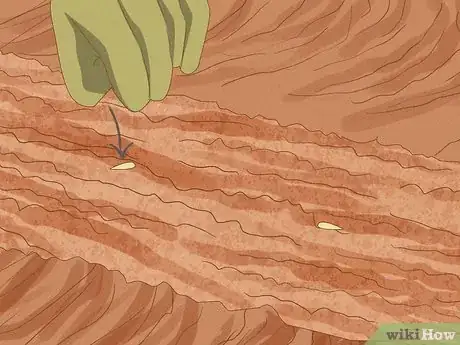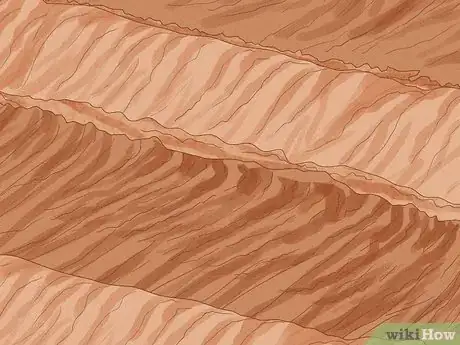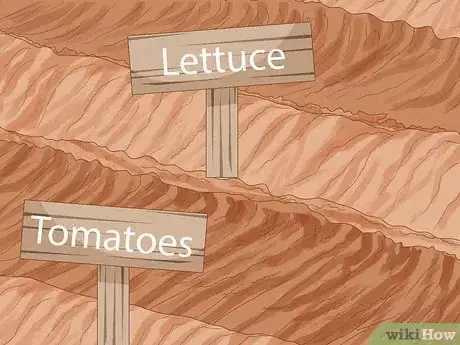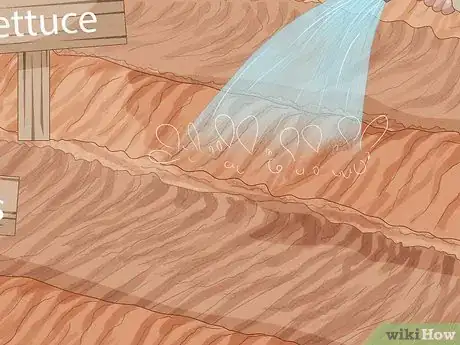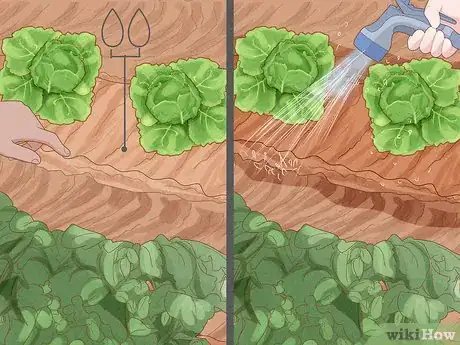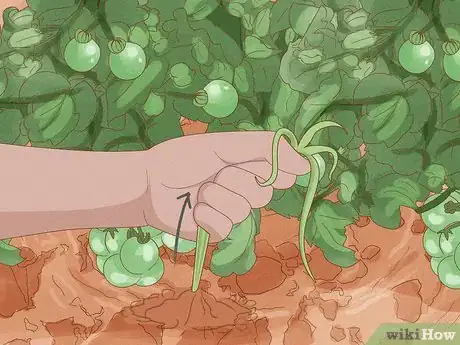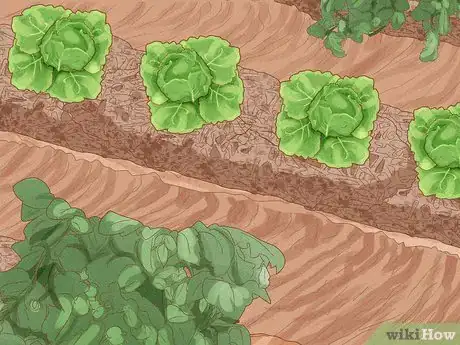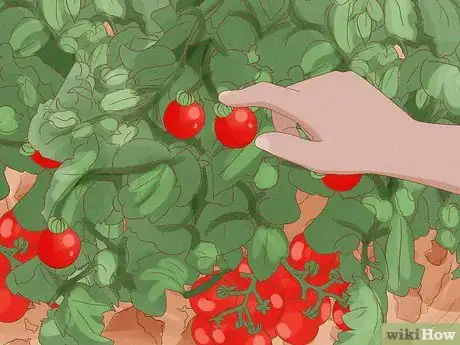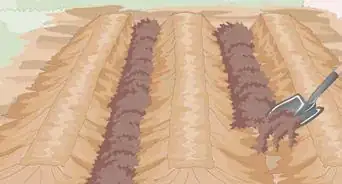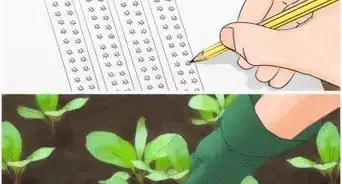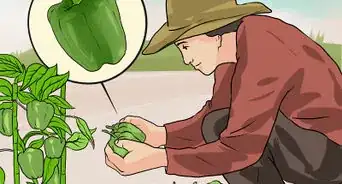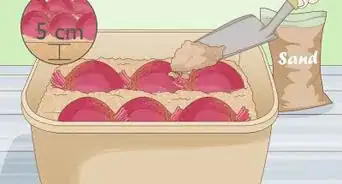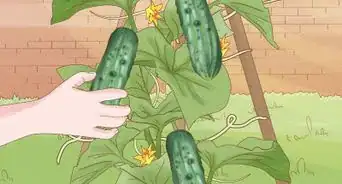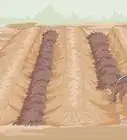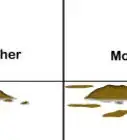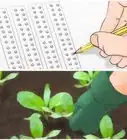This article was co-authored by Andrew Carberry, MPH. Andrew Carberry is a Food Systems Expert and the Senior Program Associate at the Wallace Centere at Winrock International in Little Rock, Arkansas. He has worked in food systems since 2008 and has experience working on farm-to-school projects, food safety programs, and working with local and state coalitions in Arkansas. He is a graduate of the College of William and Mary and holds a Masters degree in public health and nutrition from the University of Tennessee.
There are 8 references cited in this article, which can be found at the bottom of the page.
This article has been viewed 43,385 times.
Growing your own vegetables is a great way to save money, spend time outdoors, get exercise, and eat fresh, delicious vegetables! You can grow vegetables in your own backyard, but if you don’t have much space you can also grow veggies in containers on your front porch or deck. Keep reading to learn how to start growing your own vegetables.
Steps
Planning Your Garden
-
1Decide if you want to plant vegetables in the ground, in raised beds, or in containers. Each of these options has its own advantages and disadvantages, so consider your situation before you decide to determine which method will work best for you. [1]
- Planting in the ground is great if you have good soil and don’t mind getting down on your hands and knees. It is often the best option if you want to grow large amounts of vegetables.
- Raised beds work well if you don’t have very good soil and/or you have a bad back.
- Container gardens are great if you only want to plant a few things or if you don’t have a yard to plant vegetables in.
-
2Decide what you want to plant in your garden. Make a list of all of the vegetables that you would like to grow. If you are new to gardening, then you might want to start by growing some of these vegetables, which are considered easy to grow.
- Bush beans
- Beets
- Carrots
- Cucumbers
- Lettuce
- Snap peas
- Radishes
- Tomatoes
- Zucchini
- Yellow Summer Squash
- Herbs
Advertisement -
3Consider your space, time, sunlight, and vegetable consumption. As you think about the vegetables you would like to grow in your garden, consider the following: space, time, light, and amount of vegetables you will eat.[2]
- Space. How much room do you have available to plant your vegetable garden? If you have a small space, you will need to limit the number of vegetables that you plant, or select a plant that takes up a small amount of space.
- Time. How much time do you want to put into your garden every day? The bigger the garden, the more time you will have to put into it.
- Amount of vegetables you will eat. How much will you and/or your family eat? A large garden may provide you with more vegetables than you will be able to consume each week.
-
4Look for a good spot. Whether you want to plant a vegetable garden in the ground or just plant some veggies in containers, you will need to find a spot that satisfies basic garden criteria.[3]
- Choose a spot where your veggies will get at least 6-8 hours of full sunlight each day.
- Choose a spot that you can reach with a hose. If you are planning a container garden, then you can just use a watering can.
- Choose a spot with good soil. If you are planning a container garden, then just use good soil in the containers. If you are planting in the ground, be sure to test the soil to see if anything needs to be added.
-
5Design your vegetable garden. If you are going to plant your vegetables in the ground or in a raised bed, create a rough sketch of where you will plant each vegetable. The most common way to arrange vegetables in a garden is in rows. As you plan and sketch, allow for about 18 inches (46 cm) between each row so that you will be able to access the plants for weeding, watering, and harvesting. You can use your sketch as a guide when you plant your garden.[4]
- Raised beds can be planted with narrower spacing the rows of vegetables in the ground.
-
6Buy your seeds. When you have decided what you want to grow in your garden, purchase your seeds. Make sure to check seed packet instructions for ideal planting times and other information that might help you decide which ones will work best in your garden.[5]
- You can also buy seedling plants if you will be putting in your garden a bit late or if you just want to make sure that your garden gets off to a good start. But keep in mind that plants are more expensive than seeds.[6]
- If you are starting with a small garden or a few containers, it may be easier to purchase small plants rather than trying to start from seeds.
Planting Your Garden
-
1Gather your tools. Before you begin planting your vegetable garden, you will need to gather some basic gardening tools such as a:[7]
- Spade
- Garden fork
- Hoe
- Hose
- Wheelbarrow (or a bucket if you are going to plant in containers)
-
2Wear gloves and some clothes that you don’t mind getting dirty. You will probably get dirty planting your garden, so it is a good idea to wear gloves and clothes that you don't mind getting dirty.
-
3Till the soil. If you are planting your vegetable garden in the ground, then you will need to use a tiller or hoe to loosen the soil before planting your seeds and/or plants. If you are planting your vegetable garden in raised beds or containers, then you do not have to worry about this step. Instead, you will need to put soil into your raised beds or containers.[8]
-
4Use the spade to dig a long shallow trench for your seeds. Follow the directions on the seed packets to determine how deep to make this trench and how far apart your trenches should be. Garden rows should be about 18 inches (46 cm) apart, but some vegetables may require more space.[9]
- If you have purchased plants, dig a hole twice the size of the container that it came in, and fill with loose soil. Then plant it in the soil at the same depth as it was growing in the pot. Some plants, such as tomatoes, may be planted deeper.
-
5Plant your seeds. Follow the directions on the seed packets to determine how far apart and how deep to place your seeds. Some packets will also instruct you to put more than one seed into each space.Read the instructions carefully to be sure.[10]
-
6Cover up the seeds with dirt. After you plant your seeds in the ground, cover them up with a thin layer of dirt and pack the dirt lightly. Follow the directions on the seed packets to determine how much dirt should go over the seeds.[11]
-
7Mark your rows. To keep track of where you planted everything, you will need to place markers at the ends of your rows or in your containers. One easy way to mark your veggies is to write the name of the vegetables on popsicle sticks and place the sticks about halfway into the ground at the end of each row or in each container.[12]
-
8Water your garden. After you have finished planting your seeds, you will need to give your garden its first drink. Ground gardens drain more slowly than raised beds and container gardens, so you will need to give more water to your seeds the first time that you water them if you have planted them in raised beds or containers.[13]
Tending Your Garden
-
1Water your garden as needed. Vegetables need about an inch of water per week to grow, and in especially dry, hot regions they may need twice that amount.[14]
- Test your soil daily to see if it requires watering by sticking your bare finger into the soil. If the top inch of the soil is dry, then you need to water your garden.[15]
- Hold off for a bit on using the hose if the forecast calls for rain. Mother nature might water your garden for you some days, but check your soil after it rains to make sure the rain has provided your plants with enough moisture.
- Remember that raised beds and containers drain faster than ground gardens, so you will probably need to water more frequently if you have planted a raised bed garden or container garden.[16]
-
2Weed your garden regularly. Check your garden for weeds about every other day and pluck them out as soon as you notice them. Do not wait for them to mature. The sooner you pick out a weed, the better. If you wait too long to pull a weed, it may go to seed and spread more weeds throughout your garden.
-
3Mulch around your plants. Whether you plant in a container, raised bed, or directly in the ground, mulching your plants will help keep them healthy and productive. Mulch around them as soon as they are big enough that you can spread mulch without covering them up.[17]
-
4Harvest your garden. Pick veggies as they become ripe. Once vegetables begin to ripen, check your garden daily so that you don’t miss out on any of your harvest. Some vegetables can be harvested when they are young, such as lettuce and squash. The plant will continue to produce more even after you pick them and many plants even produce more as a result of picking them.[18]
Community Q&A
-
QuestionHow do I help plants with difficulty growing?
 MarkloiuslejanoCommunity AnswerResearch the plants you want to help and provide them what they need to survive and grow happily.
MarkloiuslejanoCommunity AnswerResearch the plants you want to help and provide them what they need to survive and grow happily. -
QuestionWhat is the function of a plant?
 Community AnswerThe function of a plant is to grow and produce seeds or fruits for the purpose of reproduction, depending on the type of plant.
Community AnswerThe function of a plant is to grow and produce seeds or fruits for the purpose of reproduction, depending on the type of plant.
References
- ↑ http://www.bhg.com/gardening/vegetable/vegetables/planning-your-first-vegetable-garden/
- ↑ http://www.bhg.com/gardening/vegetable/vegetables/planning-your-first-vegetable-garden/
- ↑ http://www.bhg.com/gardening/vegetable/vegetables/planning-your-first-vegetable-garden/
- ↑ http://www.bhg.com/gardening/vegetable/vegetables/planning-your-first-vegetable-garden/
- ↑ http://www.gardeners.com/how-to/how-to-start-seeds/5062.html
- ↑ http://www.gardeners.com/how-to/how-to-start-seeds/5062.html
- ↑ http://www.almanac.com/vegetable-garden-planning-for-beginners
- ↑ http://www.bhg.com/gardening/vegetable/vegetables/planning-your-first-vegetable-garden/
- ↑ http://www.gardeners.com/how-to/how-to-start-seeds/5062.html
- ↑ http://www.gardeners.com/how-to/how-to-start-seeds/5062.html
- ↑ http://www.gardeners.com/how-to/how-to-start-seeds/5062.html
- ↑ https://www.apartmenttherapy.com/10-diy-seed-markers-for-your-garden-169269
- ↑ http://www.bhg.com/gardening/vegetable/vegetables/planning-your-first-vegetable-garden/
- ↑ http://bonnieplants.com/library/how-much-water-do-vegetables-need
- ↑ http://bonnieplants.com/library/how-much-water-do-vegetables-need
- ↑ http://www.bhg.com/gardening/vegetable/vegetables/planning-your-first-vegetable-garden/
- ↑ http://www.rodalesorganiclife.com/garden/how-to-mulch-your-garden
- ↑ http://www.bhg.com/gardening/vegetable/vegetables/planning-your-first-vegetable-garden/
- ↑ http://www.almanac.com/vegetable-garden-planning-for-beginners
- ↑ http://www.planetnatural.com/vegetable-gardening-guru/tips/
- ↑ http://planthardiness.ars.usda.gov/PHZMWeb/
About This Article
Before you start growing your vegetables, use a tiller or hoe to loosen the soil before planting. Then use a spade to dig a long, narrow trench for your seeds. Be sure to read the seed packet directions so you’ll know how deep and how far apart your trenches for a particular plant need to be! Next, plant your seeds based on the directions given, and cover them with a thin layer of lightly packed dirt. Mark your rows so you’ll know what you’ve planted where. Finally, give it all a good watering and watch it grow. To learn more from our Food Systems Expert co-author, like how to harvest your vegetables when they're finished growing, keep reading the article!
